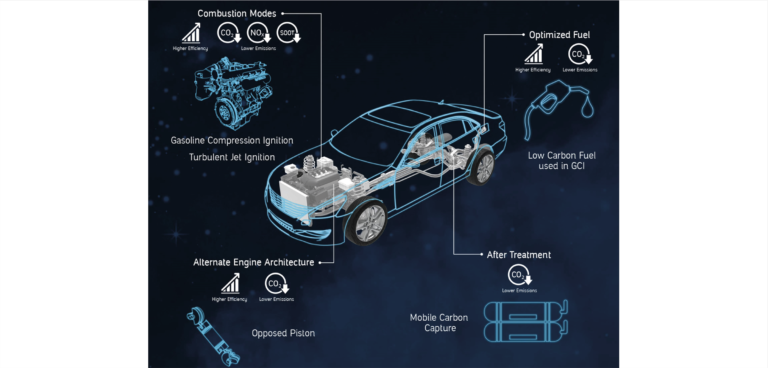Research by the Transport Technologies Division of Saudi Aramco has investigated the optimum piston design for gasoline compression ignition (GCI) engines. In the study, the piston bowl geometry and injector design of a light-duty GCI engine were co-optimized using computational fluid dynamics (CFD) and advanced machine learning (ML) techniques, with the results published in the journal Fuel. Overall, the optimized design netted 3.8-4.5% reductions in fuel consumption compared with a baseline design.
The study was conducted at low (6 bar), mid (11 bar) and high (22 bar) load indicated mean effective pressure (IMEP) conditions. The CFD setup was first validated against experimental data before the injector and piston bowl were simultaneously co-optimized. Thirteen (10 piston related and three injector related) design parameters were considered with 128 DoE cases generated at each load position. The top three designs were then subjected to further analysis, with the best DoE solution chosen after weighted merit values were defined to select a single design across all load conditions.
Machine learning was then used to optimize the simulated data set. It was found that a flatter piston crown design with low center height, wide and shallow bowl, and a low lip was preferable in low- and high-load conditions. At low load, using partially premixed compression ignition (PPCI) mode, it was found that spray targeting the upper lip, and division of the spray into the bowl and squish zones, created enhanced mixing and generated the best results.
Operating in a high-load mixing-controlled diffusion combustion mode, where injection occurs near the top dead center (TDC) and diffusion burn was found to be the dominant combustion mode, targeting the lower lip was found to be favorable. At the mid load with a high premixed ratio, the combustion was close to homogeneous charge compression ignition (HCCI) and the piston bowl design had limited effect.
Regarding the optimum injector parameters, the study found that a larger number of nozzles with smaller diameters were favorable at low load, helping to control the partially premixed charge. At high load, larger and fewer nozzles were found to be the optimum solution.
The full paper can be found here.


